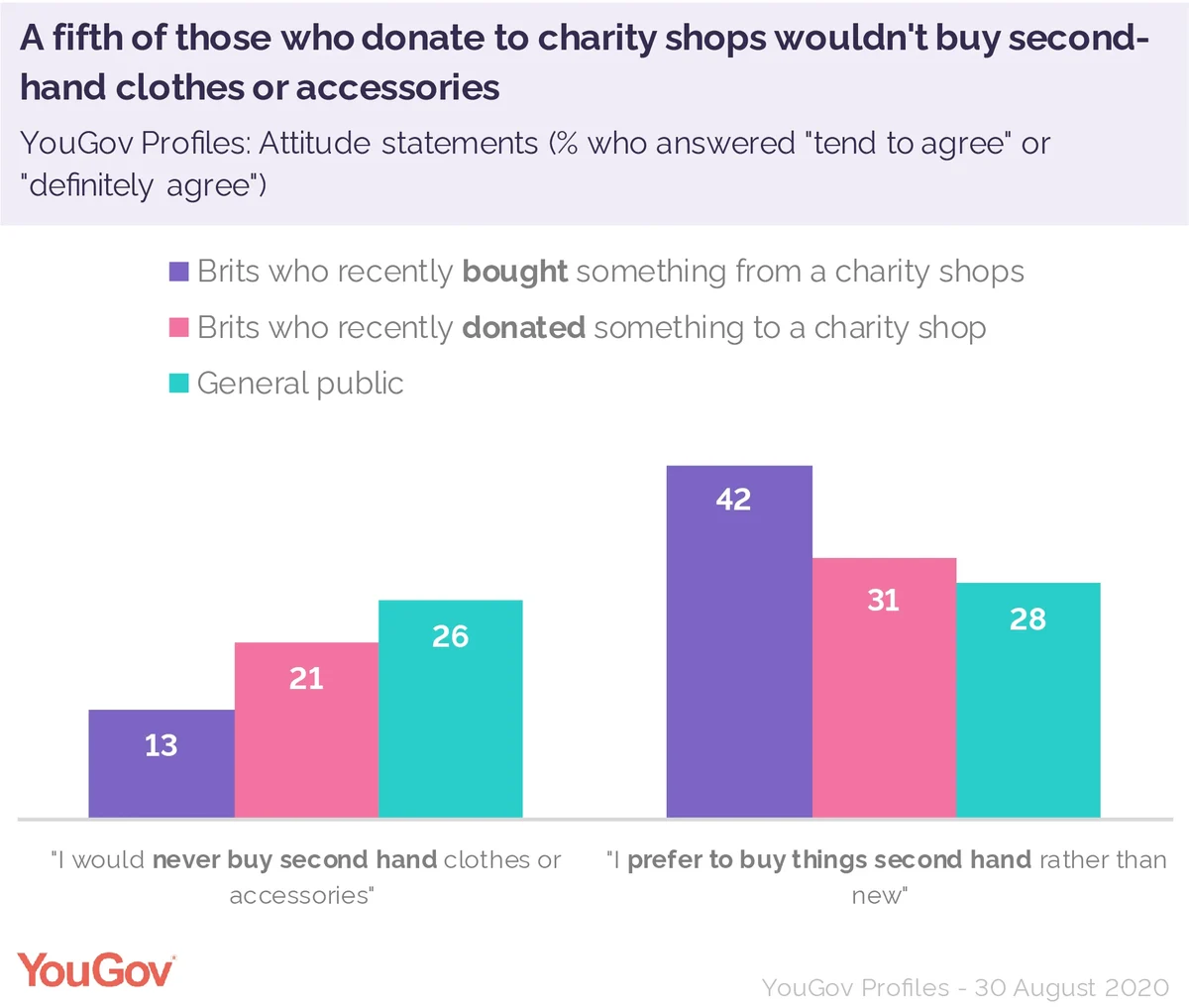As Oxfam’s #SecondHandSeptember campaign returns we take a look at the consumers who buy from – and donate to – charity shops
Last year, Oxfam launched its #SecondHandSeptember campaign, which asked consumers to only buy “pre-loved” clothing for an entire calendar month in a bid to raise public awareness about the impact of “fast fashion”. The campaign returns this year having opened a pop-up charity shop in Selfridges and enlisting I May Destroy You and Chewing Gum creator Michaela Coel as the face of the campaign.
So why might Oxfam be keen to enlist a young, buzzy multi-hyphenate celebrity to promote #SecondHandSeptember?
YouGov Profiles data indicates that a quarter of the British public (26%) say they “would never” buy secondhand clothes or accessories. Nearly three in ten (28%) Brits have bought something from a charity shop in the three months before they were polled, while a third (33%) have donated something to a charity shop over the same period of time.

Of those who have purchased a secondhand item, half (48%) are over 55 and a third (32%) are between 35 and 54. Just 19% are aged 18 to 34. Those who donate to charity shops also trend older: half (50%) are over 55, a third (33%) are between 35 and 54, and a fifth (19%) are aged 18 to 24. Those who buy from charity shops are less likely to keep up to date with current fashion trends than the general public (17% vs. 21% of the wider public) and less likely to say they consider themselves more fashionable than their peers (14% vs. 17% of the public).
Brits who have bought something from a charity shop in the past few months are much more likely to favour secondhand purchases (42% vs. 29% of the public). But our data also suggests that, while three in ten (31%) of those who donate to charity shops prefer to buy things secondhand, a fifth (21%) aren’t willing to buy from them at all – compared to a quarter (27%) of the general public.
So Oxfam’s decision to pitch its returning campaign at a wider, younger target audience could make sense: given that those who buy from charity shops currently represent a narrow slice of the general public – and that even a significant minority of those who donate to charity shops wouldn’t consider using them – there may well be room to expand the appeal of these stores.











